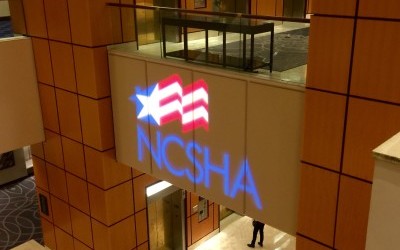Last week I attended NCSHA’s HFA Institute in Washington, D.C. This meeting is held annually in January and provides program-specific training modules for industry professionals and state allocating agencies focusing on legislative and regulatory updates, program basics and hot topics.
While it’s always refreshing to visit D.C. in January and to mingle with the various state and federal agencies in attendance, my primary focus this year was to get a pulse on the impact of the permanent extension of the fixed 9 percent Low Income Housing Tax Credit (LIHTC) rate.
In the waning days of 2015, the U.S. Congress passed the Protecting Americans from Tax Hikes Act of 2015, which included a long-requested provision that set the minimum tax credit rate at 9 percent. Outside of the years when Congress temporarily fixed the 9 percent rate at 9 percent, the rate fluctuated on a monthly basis based on the federal cost of borrowing.
With the 9 percent rate becoming permanently locked, I was very interested to see how the industry would react and how the state allocating agencies would respond.
A win for LIHTC industry
The overwhelming consensus — pretty undisputed if you ask me — is that the permanent 9 percent rate is a win for the LIHTC industry. The fact that Congress acted to make permanent a minimum rate acknowledges the importance of the LIHTC program to affordable housing development across the nation. One may say it serves as a vote of confidence.
Industry professionals share anticipated impact
During Tuesday afternoon’s “Housing Credit Investment Forum,” Darrell Beavers, housing development team manager for the Oklahoma Housing Finance Agency, who was leading a panel of equity investors, posed a question to the state housing agencies in the audience. He asked, “What impact do you anticipate at your state agency given the now permanent 9 percent credit rate?”
Most agencies responded that there would be no changes in their underwriting of the LIHTC projects.
Investors also responded. Ronne Thielen, executive vice president for R4 Capital, commented that the rate lock makes equity investments more predictable. No longer do syndicator and investors have to wait to know what the credit rate will be (assuming the project owner elected to wait to “lock in” the rate until buildings were placed into service).
Beth Stohr, LIHTC director for U.S. Bancorp Community Development Corporation, brought up a good point that the permanent 9 percent rate will have no impact on states with credit caps but will be very beneficial for states with little to no soft funding available for developers.
What this means for Indian Country projects
For Indian Country, the permanent 9 percent rate will be critical to ensuring the financial feasibility of LIHTC developments. Depending on the parameters governing your state’s Qualified Allocation Plan (QAP), the 9 percent rate may offer an increase in credits available to your project from anywhere between 15 and 20 percent.
The additional credits will translate to more investor equity going towards construction or rehabilitation thereby allowing tribal resources to be allocated to other needed projects or operating assistance.
Tribal projects that are not located in Qualified Census Tracts (QCTs) or Difficult to Develop Areas (DDAs) — or those that would otherwise be ineligible for the 30 percent basis boost — will likely see the most benefit from the permanent 9 percent rate.
Outlook remains bright
The LIHTC program is — and will remain — the best avenue for tribes and tribal TDHEs to construct affordable housing. With a resurgence in LIHTC pricing over the last year and a half, the outlook for 2016 (and beyond) remains good.
If you have any questions about a proposed project or would like to discuss more about opportunities for affordable housing development, please do not hesitate to contact me.
I’d be happy to explore with you opportunities in your state and review with you ways that Travois can help deliver upon your housing goals.


